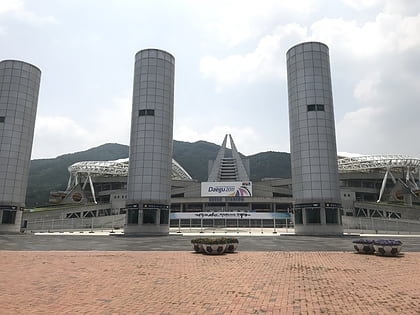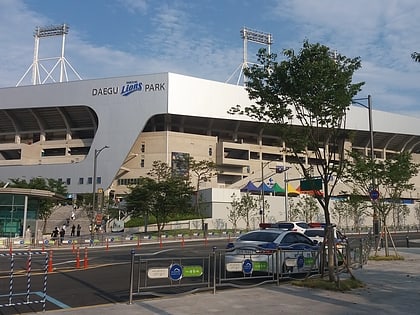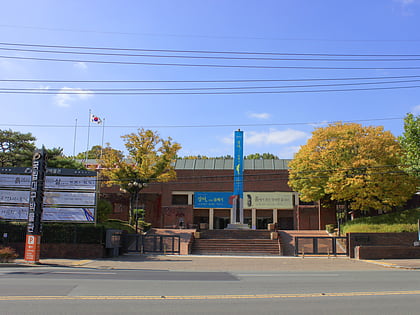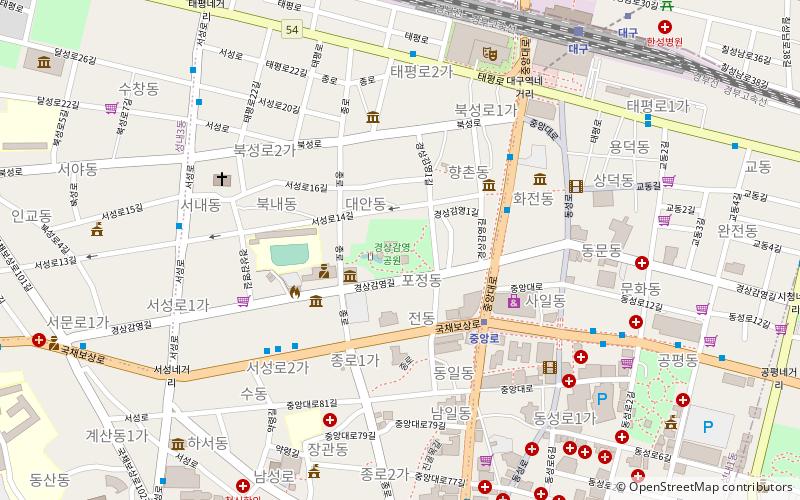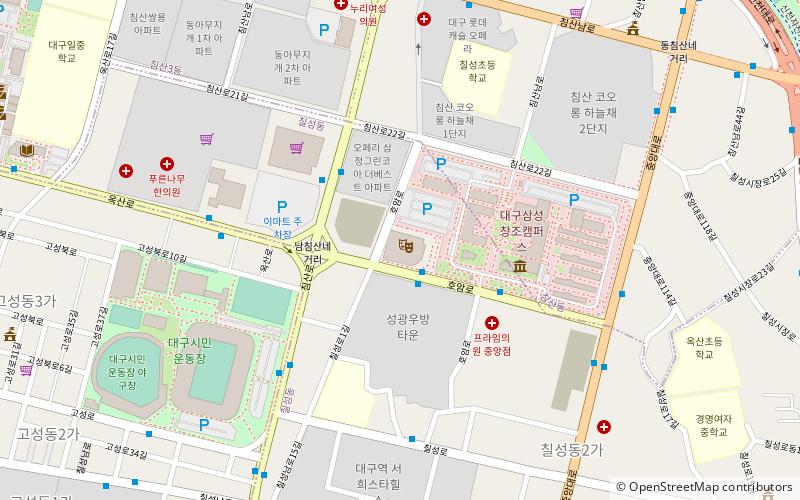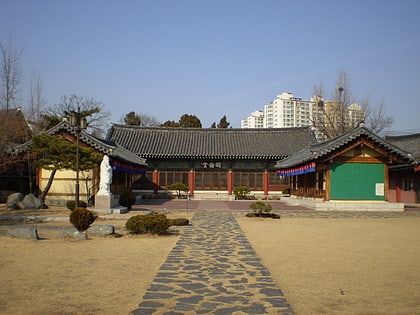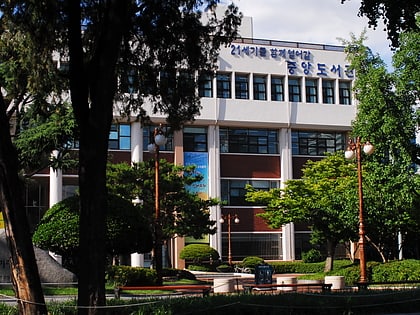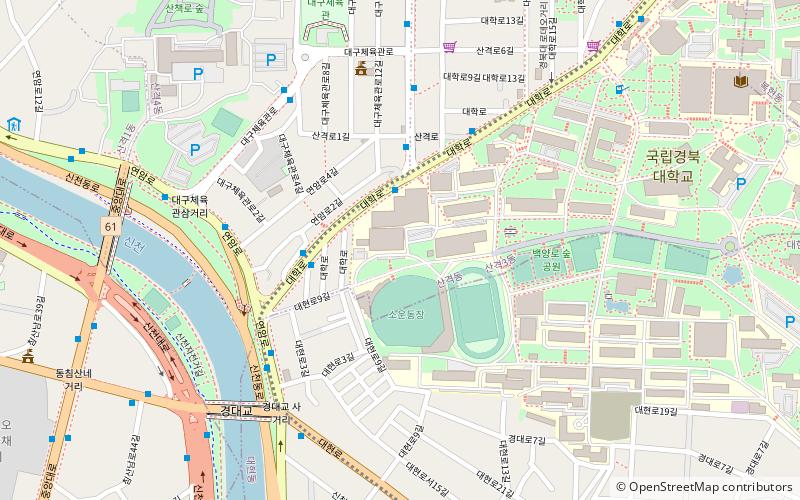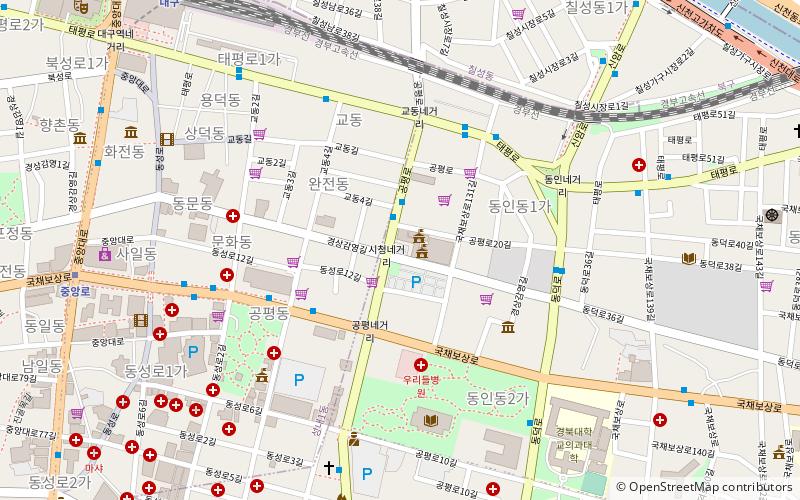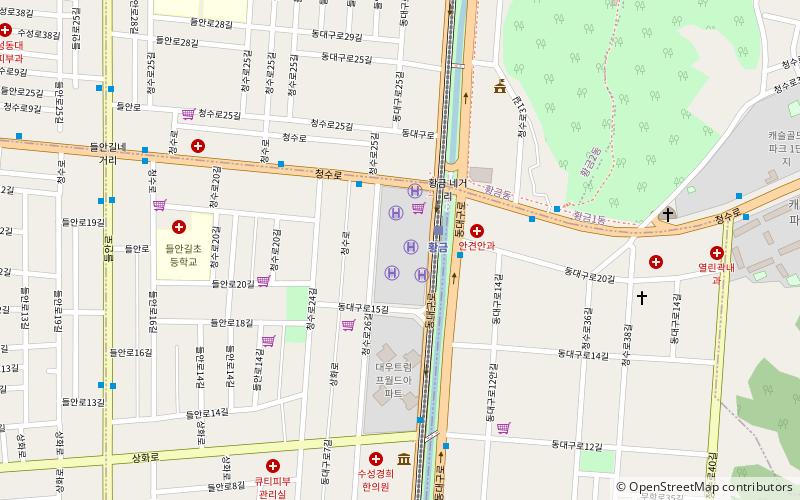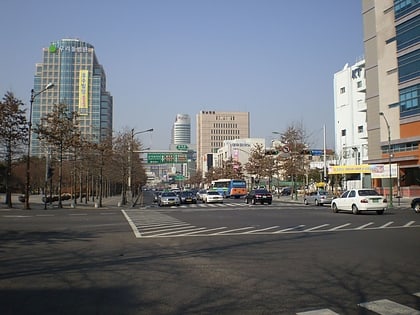Daegu Stadium, Daegu
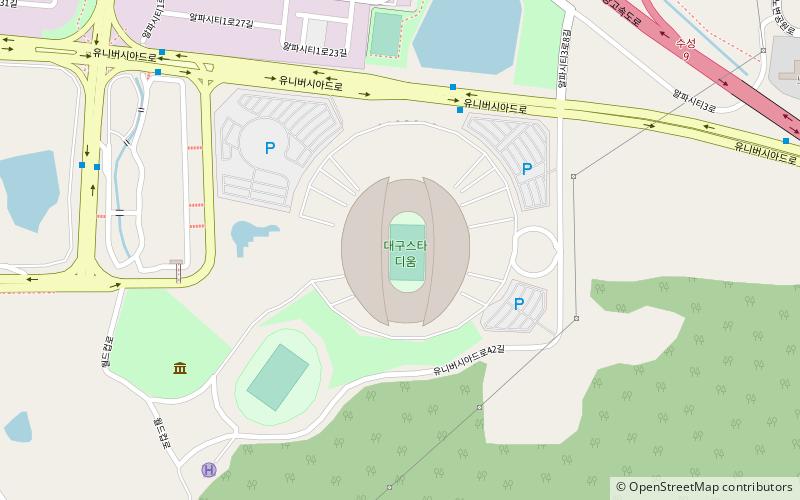
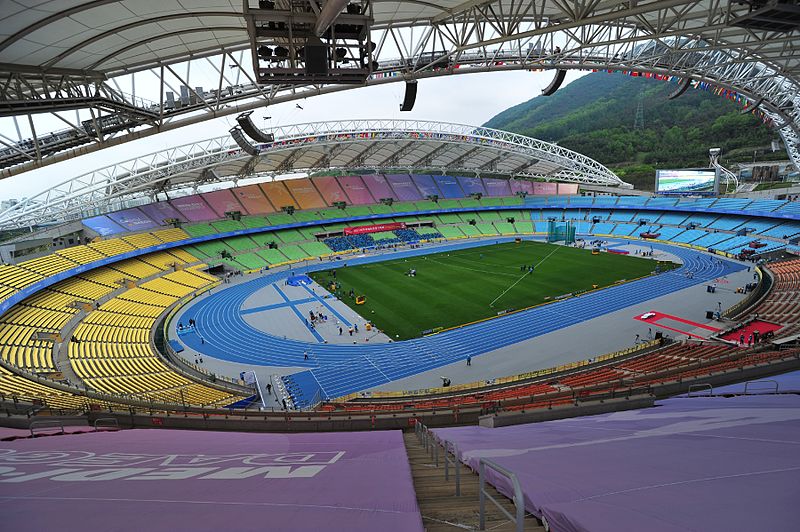
Facts and practical information
Daegu Stadium, also known as the Daegu World Cup Stadium, stands as a modern colossus in the realm of sports venues in South Korea. Constructed in 2001, this impressive structure was primarily built to host matches for the 2002 FIFA World Cup. The stadium boasts a seating capacity of approximately 66,000 spectators, making it one of the country's largest stadiums.
Located in the bustling city of Daegu, the stadium is not only a hub for football enthusiasts but also serves as a versatile venue for athletics, concerts, and various cultural events. Its design is inspired by traditional Korean hats known as "gat," which is reflected in the roof structure, symbolizing the city's rich cultural heritage.
Daegu Stadium gained international recognition when it hosted the IAAF World Championships in Athletics in 2011, showcasing its world-class facilities and reinforcing its status as a premier international sports venue. The stadium's all-weather track, top-notch amenities, and advanced technology systems make it an ideal location for high-profile athletics competitions.
Beyond the roar of sports events, Daegu Stadium also offers a unique experience for visitors and tourists. Its expansive grounds are equipped with recreational areas, including a vast park that allows for leisurely strolls and family outings. The stadium is easily accessible via public transportation, making it a convenient destination for both locals and international visitors.
Daegu Stadium – popular in the area (distance from the attraction)
Nearby attractions include: Daegu Samsung Lions Park, Daegu National Museum, Gyeongsang-gamyeong Park, Daegu Opera House.
Frequently Asked Questions (FAQ)
How to get to Daegu Stadium by public transport?
Metro
- Gosan • Lines: 2 (24 min walk)
- Daegu Grand Park • Lines: 2 (27 min walk)
